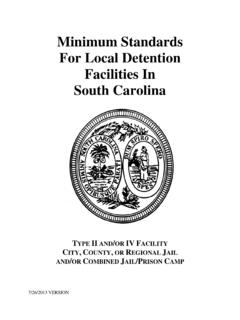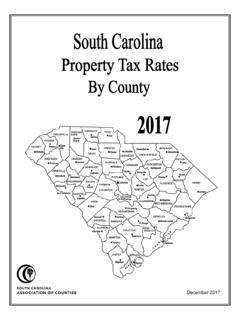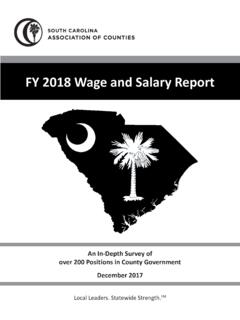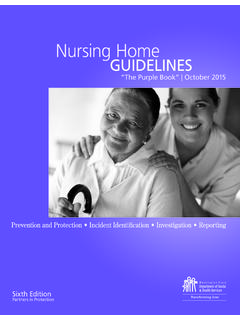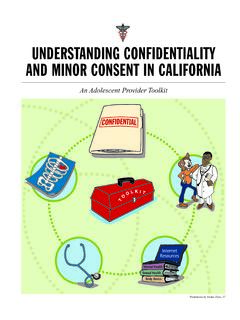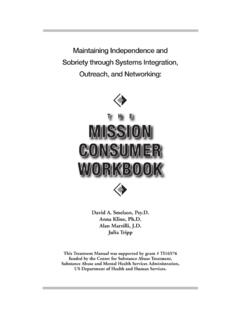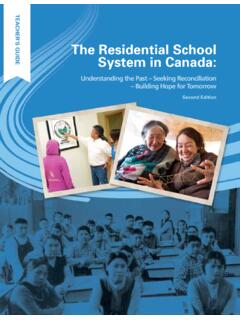Transcription of GUIDE TO LAND USE PLANNING FOR SOUTH CAROLINA
1 GUIDE TO LAND USE PLANNING FOR SOUTH CAROLINA 2017 EDITION Published by SOUTH CAROLINA Association of Counties FOREWORDThis publication is offered as a resource to county officials when trying to determine whether landuse PLANNING is a service their community wants or needs. It is also an attempt to aid thosejurisdictions which have decided to engage in land use PLANNING . We recognize that not every official who is involved in the land use PLANNING process is a full-timeexpert and this publication is intended to give a layperson a starting point for an examination ofissues facing their community. This is by no means a one size fits all solution. The text offers adiscussion of land use PLANNING in general, not a prescription. The forms and samples in theappendices are offered as drafting checklist intended to point out decisions which may be made.
2 Itis important to consult with local decision makers and the county attorney when drafting ordinances,forms or designing a land use plan. In preparing this document, the SCAC staff received advice, suggestions, forms, and support frommany county officials. We would like to specifically thank the following for generously sharing theirtime, expertise and documents: Penelope Karangounis, PLANNING Director, Lancaster County; PhilLindler, PLANNING & Zoning Director, Greenwood County; Audra Miller, Director, York CountyPlanning & Development; Stephen Strohminger, Director, Aiken County PLANNING & Development;Janet Carter, PLANNING & Zoning Director, Horry County; Jeff Anderson, Lexington CountyAttorney; and Michael Kendree, York County Attorney. Table of ContentsOverviewWhat is Land Use PLANNING ?..1 Need for Public Role of Local Government PLANNING 1 - PlanningStatutory Basis for Land Use PLANNING of Counties and PLANNING Commission Function and Comprehensive PLANNING 2 - ZoningZoning Domain & for Adopting Zoning of Zoning Issues in 3 - Board of Architectural and and Authority of the Preservation 4 - Zoning Enforcement ProceduresStop and With Other Use 5 - Land Use of Land Development That May be and for the Existence of Restrictive and Plan Bond for Completion of Site of Actions and of Streets or 6 - Official Map Map and Appeal Exemption 7 - Development of of of and Federal 8 - Statutory & Parliamentary ProceduresRules of and Freedom of Information to Conduct Regular Participation in 9 - Education Requirements for PLANNING Officials and
3 EmployeesPlanning Education and Employees Exempt from Education to Complete Training - Model Ordinance: Establishing a County PLANNING - Model Ordinance: Establishing a Joint City-County PLANNING - Model Ordinance: Designating County PLANNING Commissionas PLANNING Commission for D - Model Ordinance: Designating Municipal PLANNING Commissionas PLANNING Commission for a Designated Portion of the Unincorporated Area of the - Model Ordinance: Establishing a County Board of Zoning - Model Ordinance: Establishing a County Board of Architectural - County PLANNING Commission Rules of - County Board of Zoning Appeals Rules of - County Board of Architectural Review Rules of - Notice of Public Hearing on Comprehensive - Notice of Public Hearing on Zoning - Notice of Board of Zoning Appeals - Notice of Board of Architectural Review - Notice of Public Hearing on Land Development - Notice of Public Hearing on Development - Disqualification - Designation of - Zoning Map Amendment (Rezoning)
4 - Zoning Text Amendment - Zoning Permit - Stop - Hearing Request Form County Board of Zoning - Order on Appeal From Action of the Zoning Official County Board of Zoning - Order on Variance Application County Board of Zoning - Order on Special Exception Application County Board of Zoning - Variance Review - Special Exception Review - Local Government Comprehensive PLANNING Enabling Act, Title 6, Chapter 29 of the Code of - Local Government Development Agreement Act, Title 6, Chapter 31ofthe Code of ability of local governments to engage in land use PLANNING is derived primarily from the SouthCarolina Local Government Comprehensive PLANNING Enabling Act (frequently referred to as PLANNING Act or the Act hereafter), found at Chapter 29 of Title 6 in the SOUTH CAROLINA Codeof Laws. There are several other acts and Code provisions which affect the authority and procedurescontained in the Act, but the foundation and most of the details are found in the Act.
5 A copy of theAct is included in this publication as Appendix is Land Use PLANNING ? PLANNING usually means activities to prepare and organize for the future. PLANNING can be definedas the process used by local governments local problems and information and facts necessary to study local problems and at a consensus on local goals and plans and programs for fulfilling the adopted goals and available powers to execute plans and programs in an efficient and the process above to all public and private land development and use is commonly referredto as land use PLANNING . Local government activities intended to influence the appearance andgrowth of the community also fall under the land use PLANNING definition. Land use PLANNING is themost visible form of PLANNING because of its potential impact on the fundamental design of acommunity. It is important to understand the difference between land use PLANNING and zoning.
6 Zoning is only one of several regulatory devices available for local governments to carry out landuse PLANNING . Need for Public InputThe need for public input is critical throughout the PLANNING process described above. Direct citizeninvolvement in the preparation of plans is the best, and perhaps only, way to accurately assesscommunity problems and needs. Citizen input is important to the adoption of community goals andobjectives. Developing plans and programs requires a close and continuous collaboration betweencitizens and local government officials. Most successful PLANNING programs are distinguished by thelevel and character of citizen participation in the process. The Role of Local Government PlanningGrowth may lead to conflicting land uses or pushing existing activities out of an area, or populationconcentrations that make PLANNING more desirable. PLANNING often begins to address road congestion,prevent overcrowding and to preserve an orderly community.
7 Early land use PLANNING efforts were adopted to lessen conflicting land uses from impactingresidential areas. Rapid population growth can put people in conflict. Devices such as subdivision1regulations and zoning may be enacted to attempt to balance public and private interests. These andother tools may be used to allow public services, such as transportation, schools and emergencyservices, to keep pace with growth or facilitate growth with less conflicting uses. Land use planningdoes not solely focus on zoning, but includes elements for public facility PLANNING to serve the publicliving in the community. A community may wish to examine land use PLANNING as a method to preserve elements of whatattracted growth to an area. These features may be the historical character of an area. Another featurewhich may spur the exploration of land use PLANNING is preservation of green space or family farms.
8 Land use PLANNING is also used to create buffers to protect community assets, such as an airport, industrial park or military facility from encroachment by conflicting land uses on neighboring land. During recent base consolidation and closure efforts, one frequently cited reason a particular facilitymay have been more likely to close was the development of incompatible uses up the borders of amilitary facility, thereby putting the military facility in conflict with its neighbors, inhibiting existingoperations or preventing future expansion. Occasionally, land use PLANNING is looked at when a neighboring jurisdiction adopts new or stricterdevelopmental standards. As that jurisdiction begins enforcement, it may have the effect ofencouraging undesirable land uses to relocate to areas without land use measures or less stringentland use measure. Examples include junkyards, landfills, sexually oriented businesses and odiousindustries.
9 Local PLANNING OrganizationThe land use PLANNING statutes in SOUTH CAROLINA influence the manner in which local governmentorganize for land use PLANNING . The PLANNING Act and common practice combine to form fourintegral parts of the government PLANNING organization:1. the governing and absent from the list above is the most important part of the organization - the public. Thepublic is a part of each of these four parts of the PLANNING organization. The public plays a part inevery aspect of the PLANNING organization through solicited input at community meetings,participation in formal public hearings, as members of the boards and commissions that form thefour parts mentioned above and through daily contact with PLANNING staff and officials. Publicinvolvement in the process can be the reason for the ultimate success or failure of the local planningprogram.
10 Governing BodyThe role of the county or city governing body is a major influence in the success of a local planningprogram. The strength of a local PLANNING program can be judged by how the governing body decidesissues concerning community growth and development, and how closely these determinations reflect2adopted plans. As policy and decision makers, councils have the power, through PLANNING activities,to decide how their community develops and of the primary PLANNING functions of the governing body is the establishment of its planningorganization. The initial step is creating the various boards and commissions necessary for theplanning program prescribed by the PLANNING Act. The governing body can create, by ordinance, a PLANNING commission and appoint its members. The ordinance should clearly set forth theappointment process and terms of the PLANNING commission members.

